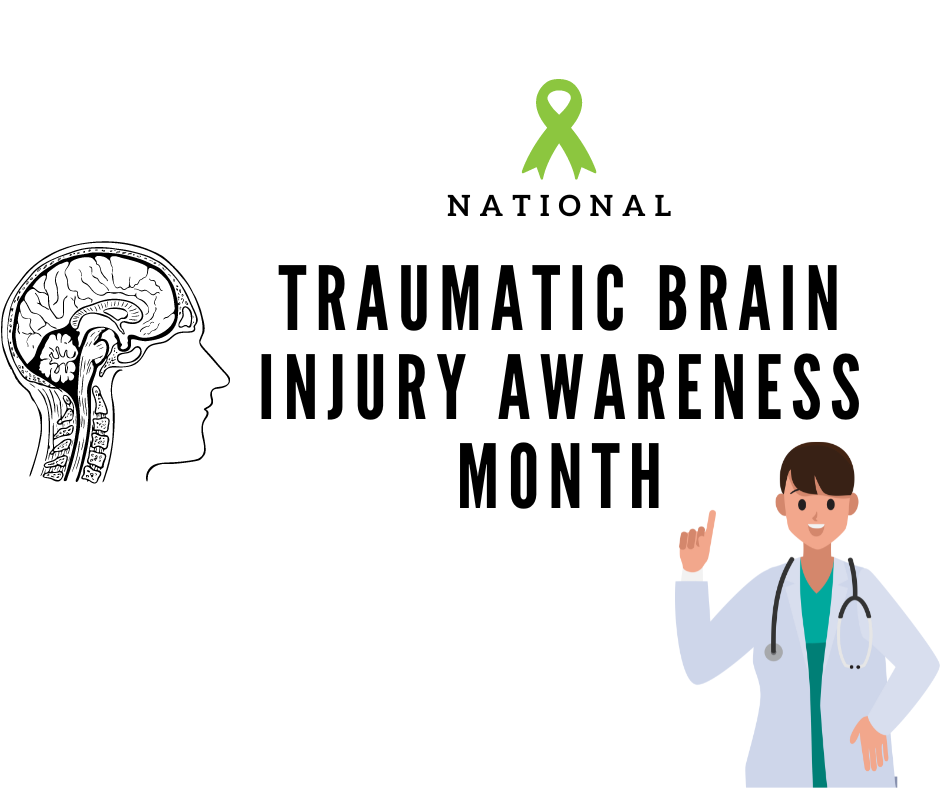Reflecting on January: Bridging Awareness for Cervical Health and Winter Sports TBI

Winter brings not just chilly winds and snowflakes but also the excitement of engaging in thrilling sports activities. Amidst the joy, it's crucial to reflect on the impact of winter sports with cervical health and the prevention of Traumatic Brain Injuries (TBI). January serves as a reflective month, urging us to ponder on health, safety, and well-being. We delve into the nuances of cervical health, the specific risks associated with winter sports, and practical insights to ensure a safe and enjoyable experience. Let's navigate the initiatives that bridge the gap between awareness and action.
Bridging Health Awareness
Healing TBI requires bridging the knowledge gap between the brain and the neck. Why? Our fragile brain, shielded by the cervical spine, is intricately linked to its supporter. Head trauma can ripple down to the neck, and neck problems can echo in the brain, emphasizing the need for a holistic approach.
Traumatic brain injuries (TBIs) aren't isolated events. They can cast a long shadow on the neck, affecting posture, muscle tension, and even movement. Grasping how these TBI-related issues influence cervical health is key to unlocking true well-being.
Cervical Health Initiatives
Cervical health is a crucial aspect of overall well-being, often overlooked until discomfort or pain arises. Our neck, comprising the cervical spine, plays a pivotal role in supporting the head and facilitating movement. Cervical health initiatives are essential to raise awareness about the significance of maintaining a healthy neck. The journey to optimal cervical health begins with awareness and proactive measures. Encouraging readers to prioritize their neck health ensures a healthier and more comfortable lifestyle.
Winter Sports TBI Strategies
Winter recreation activities provide a unique combination of athleticism, ability, and a strong connection to the snowy surroundings. They are culturally significant in many regions, in addition to being recreational. During the winter season, these winter sports are frequently incorporated into festivals, festivities, and community bonding.
In order to avoid traumatic brain injuries in snow sports, a mix of proactive steps is required, such as wearing adequate protective gear, practicing the right technique, and being knowledgeable about safety requirements. Winter sports lovers can enjoy the thrills of their favorite activities while lowering their risk of TBIs by prioritizing safety and using preventive techniques.
Reflective January Campaigns
January Health Observances
January is the start of a new year, and many patients make resolutions to emphasize and focus on their health and well-being. This month also includes several health observances that throw light on fundamental elements of physical and mental wellness, encouraging patients to engage in reflective health activities.
Cervical health. Strengthening cervical health awareness is an essential component of preventative care. Awareness initiatives educate people on the significance of keeping appropriate posture, minimizing extended sedentary behavior, and getting medical assistance if they experience discomfort or pain in the neck. By debunking myths and distributing accurate data, these initiatives enable people to take proactive actions toward cervical health.
Traumatic Brain Injury. Traumatic Brain Injury Awareness Month serves as a vital opportunity to inform, heighten awareness, and offer assistance to those impacted by this frequently life-changing condition. TBIs can stem from diverse incidents such as accidents, falls, or injuries related to sports. This article will delve into the importance of TBI Awareness Month and examine strategies to foster comprehension and prevent such injuries.
Winter Sports Safety Advocacy
Winter Sports Safety Advocacy plays a pivotal role in educating participants, promoting responsible practices, and minimizing the risks associated with cold-weather activities. Safety advocacy acknowledges the diversity and tailors guidance accordingly. Advocacy initiatives recognize the specific challenges posed by winter conditions, including icy surfaces, variable weather, and reduced visibility. Winter Sports Safety Advocacy emphasizes personal responsibility among participants, encouraging them to be aware of their surroundings and make informed decisions. Winter Sports Safety Advocacy extends to local communities, with initiatives such as safety workshops, community forums, and outreach programs. Collaborative efforts with winter sports resorts and facilities ensure the dissemination of safety information to a broader audience, including tourists and seasonal participants. Advocacy extends into the digital realm, with online resources offering tutorials, safety checklists, and interactive content to educate participants at their convenience.
Cervical Health Education
Understanding Cervical Health
Prioritizing cervical health education goes beyond just knowledge gain it enables people to actively participate in their well-being promoting proactive management of their physical health and ultimately unlocking their true potential individuals are better able to spot potential issues early on and apply appropriate preventative or therapeutic techniques if the anatomy and prevalent concerns are explained furthermore an emphasis on education encourages people to actively participate in their healthcare journey resulting in greater communication with healthcare practitioners and better long-term outcomes.
Bridging Cervical Health Gaps
Cervical health education serves as a vital bridge in fostering comprehensive wellness and addressing gaps in understanding and care for the neck region. Implementing comprehensive educational programs, Interactive workshops and seminars provide a platform for engaging discussions on cervical health. Bridging these gaps is not only about disseminating information but also about fostering a culture of care and responsibility for our necks.
Winter Sports TBI Prevention
Preventive Measures
Preventing Traumatic Brain Injuries during winter sports is a shared responsibility between enthusiasts and the broader community. By adhering to these preventive measures, winter sports enthusiasts can ensure not only their safety but also a season of thrilling adventures on snow-covered slopes and icy arenas.
Awareness Programs
Winter Sports Traumatic Brain Injury (TBI) Prevention Awareness Programs have surfaced to educate athletes, enthusiasts, and the public on reducing the likelihood of head injuries during winter activities. These programs play a crucial role in cultivating a safety-oriented culture within winter sports communities. Through a blend of education, skill enhancement, community involvement, and technological advancements, these initiatives actively contribute to diminishing the risk of TBIs, ensuring that participants can relish the excitement of winter sports in a secure manner.
